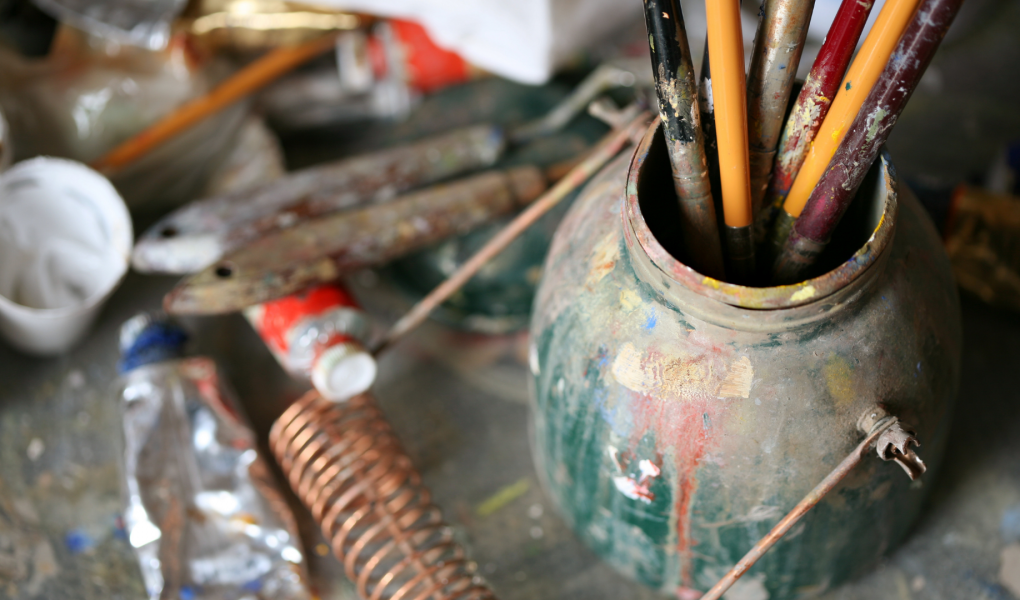You don’t have to be a professional artist to benefit from learning how to clean your brushes. The benefits of achieving a professional look for your work extend beyond the cleanliness of your paintbrushes. There are countless benefits to achieving good hand and brush techniques.
Having an excellent set of brushes makes cleaning your makeup and skincare products easier and more enjoyable. Choosing the right brush (also known as a brush type) is very important to apply your products properly. There are many different types of brushes on the market available with different shapes, sizes, and functions.
If you’re aspiring to become a makeup artist, acquiring the skill of cleaning brushes is an essential part of your training. Enrolling in a make up artist course with The Iver Academy, or similar institutions can provide you with the knowledge and techniques necessary to ensure the longevity and performance of your makeup brushes. As an artist, you can be sure that your brushes will need to be cleaned occasionally, whether you do high-end painting or just tangle-free line drawings in your spare time. You don’t want to spend the day at the office with a deformed brush, and you likely want to avoid the expense of buying a new one each time you clean.
Understandably, the thought of cleaning your makeup brushes can be intimidating. But, if you have the right tools, the right cleaning solution, and the right techniques, it doesn’t have to be. Keeping your brushes clean will help them last longer, and the process will save you money.
There are a lot of experts out there that talk about the right way to clean and care for your makeup brushes. The first thing to understand is that there are no hard and fast rules, so the way you clean and care for your brushes will change from person to person.
Before we start going over how to clean brushes effectively, it’s important to know which kind of brushes you should be using. For starters, you need to find a brush with a tip closer to what you have, and the handle should feel comfortable. It should also have a soft brush that doesn’t feel too hard or too soft, so choose one that fits your needs. Once you have your type, proceed to clean it.
There are some very important things to remember when it comes to the “how” of cleaning brushes. When cleaning your brushes, you need to remove all traces of paint and wax so that the bristles don’t clog. You do this with a solvent or cleaner. Most solvents are either water-based (like paint thinner, isopropyl alcohol or even distilled water from Golyath) or oil-based (like turpentine, mineral spirits, or paint thinner). These solvents have to do exactly what the name implies: dissolve the paint and wax from your brushes. If you have hard water, you should use a cleaner that is formulated specifically for cleaning brushes.
Part of the reason why most people have trouble cleaning their makeup brushes is that they follow the wrong steps, resulting in a dirty and unusable brush. If you want to clean makeup brushes properly, it’s very important to follow the right steps since you’ll get the best results.
If you’ve ever used a paintbrush and felt like you were about to lose your mind, then you know how frustrating it can be to clean a paintbrush. The bristles are stubborn and just won’t come off. If you’ve gone through all the trouble of washing your paintbrushes and still end up cleaning them this way, then it’s time to rethink your technique.
While most people know that to get the most out of your paint-brushing experience, you need to be clean and relatively quiet, the fact that a brush should be cleaned reduces the enjoyment of the process. A few brushes may get away with being treated as disposable, but the average user will soon tire of the frustration of having to invest minutes in cleaning their brushes.
As an artist, you can be sure that your brushes will need to be cleaned occasionally, whether you do high-end painting or just tangle-free line drawings in your spare time. You don’t want to spend the day at the office with a deformed brush, and you likely want to avoid the expense of buying a new one each time you clean.
When you are a beginner in the art of cleaning your brushes, it can be a daunting task. You don’t know where to begin or what method to use. This will be especially true if you have never dealt with a cleaning problem before. But, with just a little bit of practice, cleaning your brushes will become second nature.




